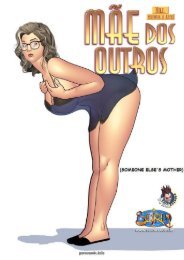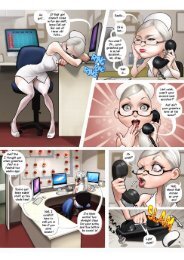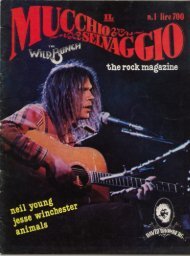AmericanCinematographer201201
Create successful ePaper yourself
Turn your PDF publications into a flip-book with our unique Google optimized e-Paper software.
War Horse, directed
by Steven Spielberg
and shot by
Janusz Kaminski,
sends a valiant
creature to the front
lines of World War I.
By Patricia Thomson
•|•
Animal
Instincts
The period drama War Horserepresents new turf for cinematographer
Janusz Kaminski and director Steven
Spielberg, even though the film is their 13th feature
collaboration. The movie tells the story of World War I
through the eyes of a horse who is raised by a farm boy,
Albert (Jeremy Irvine), in Devon, England, and then falls
into the hands of various British, French and German
masters during the war.
World War II has become a hallmark of Spielberg and
Kaminski’s collaborations, which began with Schindler’s List
(AC Jan. ’94), but War Horse is their first foray into the Great
War. “I was very excited about it because I’d never had the
chance to re-create this war before,” says Kaminski, speaking
to AC on a break from Spielberg’s Lincoln.
The picture is also something of a novelty in that it’s a
family-friendly story that takes place during wartime. The
source material is a young-adult novel of the same name by
Michael Morpugo, and the Walt Disney Co. is releasing the
DreamWorks production. However, Kaminski notes, “This
movie is not a quintessential Disney thing. It’s not happy,
bright, chocolate-covered storytelling. It’s got very brutal
moments, very sad moments.”
The filmmakers decided to shoot widescreen to play up
the pastoral landscape of Devon, where the story begins, and
they chose Super 35mm over anamorphic because they
believed the latter might be “too beautiful,” says Kaminski,
adding, “We wanted the images to have a slightly gritty feel.
“We wanted to do beautifully composed wide shots
where the land would play a significant role,” continues the
cinematographer. “We talked about John Ford films . Steven
was fascinated by the relationship between humans and land
— humans do not blend with the land, they shape it. In the
first act, when Albert is training the horse or trying to plow
the field, you see him in this amazing Devon landscape where
clouds are rolling across the sky. The shots are so wide you can
see the light patterns rolling across the field.”
Kaminski was keen to create the movie’s look incamera,
even though originating in Super 35mm and the realities
of digital exhibition meant a digital intermediate would
be part of the post process. In fact, he color-timed the picture
48 January 2012 American Cinematographer













